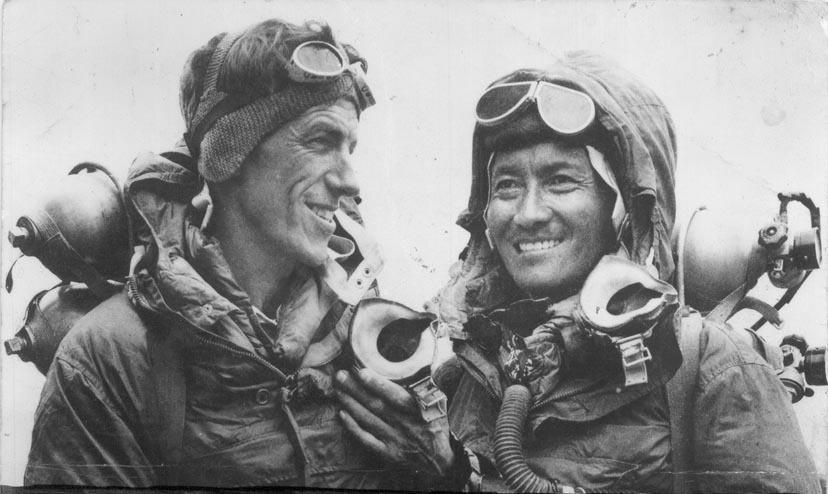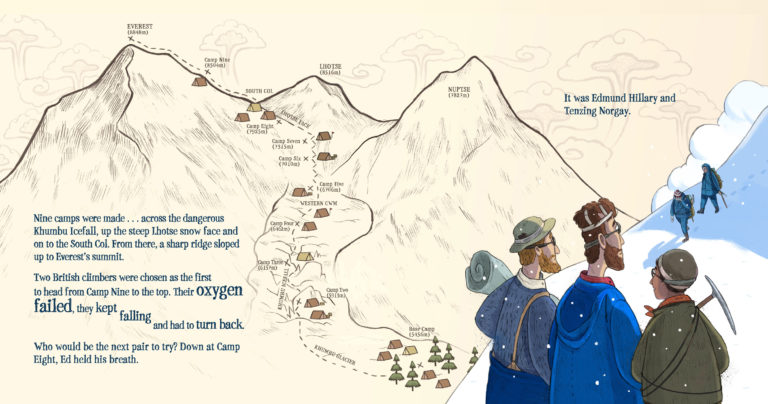“First To The Top: Sir Edmund Hillary’s Amazing Everest Adventure”
First To The Top is a picture book by David Hill and illustrated by Phoebe Morris about the first successful ascent of Mt. Everest by Sir Edmund Hillary and Tenzing Norgay. It is a simply told tale of an extraordinary achievement by a New Zealander mountaineer and a Nepali sherpa. The 1953 British Mount Everest expedition was the ninth mountaineering expedition to attempt the first ascent of Mount Everest, and the first confirmed to have succeeded when Edmund Hillary and Tenzing Norgay reached the summit on Friday, 29 May 1953. Led by Colonel John Hunt, it was organised and financed by the Joint Himalayan Committee. News of the expedition’s success reached London in time to be released on the morning of Queen Elizabeth II’s coronation, 2 June.

While it is a legendary story for it was the first time humans had scaled the highest mountain peak on earth at 8,848 m (29,029 ft), it is also a tale that is inspirational and highlights the grit and determination of Edmund Hillary. He was accompanied in his ascent by his sherpa, Tenzing Norgay. Later the two of them became firm friends too. Despite what the book title highlights, the picture book does not stop the story with the successful attempt. Instead David Hill shares the extraordinary work Edmund Hillary did in Nepal by establishing schools and helping the locals in many other ways. Later Edmund Hillary was appointed the New Zealand High Commissioner to India too.

Today, 29 May, is the 66th anniversary of the ascent of Mt. Everest. 20 July 2019 will also be the birth centenary of Sir Edmund Hillary. Sadly it is also the week when world media is agog with stories of overcrowding at the summit of Everest. There have been many unnecessary deaths too. A trek that should normally take only a few hours is now taking twice as long due to the excessive number of people wanting to climb the mountain.

Nevertheless the story of the first ascent of Everest will continue to be legendary for it is the first time that man overcame all odds to climb a formidable peak such as Mt. Everest. It was at a time when mountaineering equipment by today’s standards would be considered rudimentary. It was not necessarily wind and water proof light clothing. The rucksacks the mountaineers carried would have been heavy and coupled with low oxygen supplies at such a height, the climb would have been dangerously challenging.
First To The Top is an inspirational tale that little children may as well hear. It has been told well by David Hill. The illustrations by Phoebe Morris are bright and colourful. The double-page spreads with the text in varying fonts laid out across the pages allows for an interactive experiences while introducing tiddlers to letters and word formations. No wonder it won a clutch of awards: Winner of the 2016 Non-fiction HELL Children’s Choice Awards, 2016 Story lines Notable Picture Book Awards and 2015 New Zealand Listener Top 50 Children’s Book Awards.
First To The Top is a good addition to a personal or a school library. Get it.
29 May 2019




